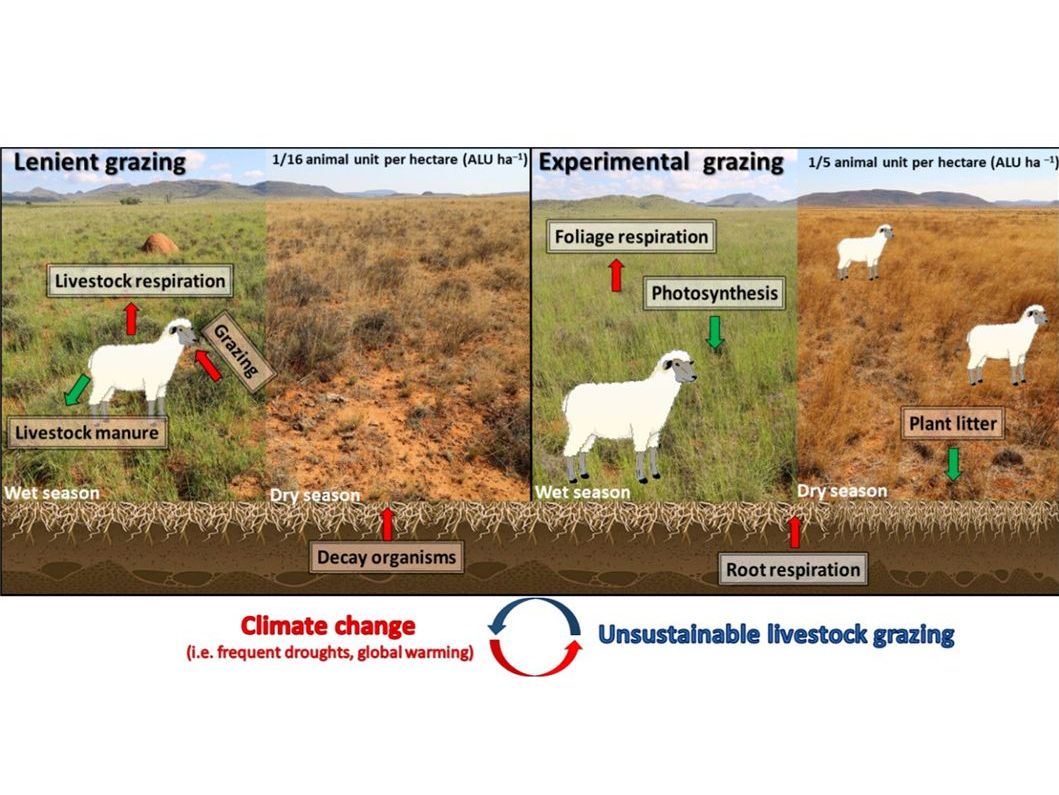This study highlights the complex dynamics of carbon exchange in the semi-arid Karoo ecosystems of South Africa under different intensities of livestock grazing. Surprisingly, an overgrazed site showed higher carbon sequestration potential after a long resting period compared to a site under lenient grazing, challenging conventional assumptions. This occurred despite the degradation of vegetation and the reduction of plant species richness due to historical overgrazing. However, the potential for increased carbon sequestration declined rapidly after grazing resumed, even after a resting period. Notably, after re-introduction of intensive grazing based on South African standards, the overgrazed site still showed slightly higher levels of carbon sequestration compared to the lenient grazing site. These findings will help to develop better land management strategies in semi-arid regions, emphasizing the key role of precipitation distribution and vegetation composition in the transition between carbon sources and sinks.
Scroll to top

![[Translate to English:] [Translate to English:]](/media/_processed_/6/4/csm_titel_CO2Kampagne8_afeea2273e.png)
![[Translate to English:] [Translate to English:]](/media/_processed_/4/1/csm_titel_93px_CO2Kampagne8_9b0f3354d4.png)

![[Translate to English:] Logo des Bundesministerium für Ernährung und Landwirtschaft](/media/allgemein/logos/BMEL_Logo.svg)